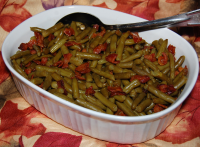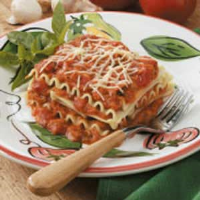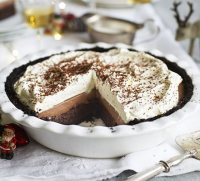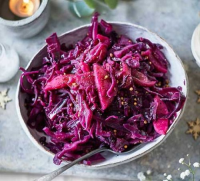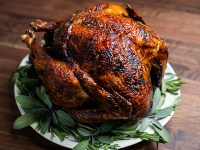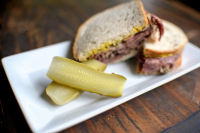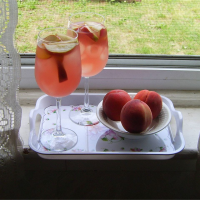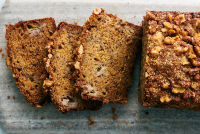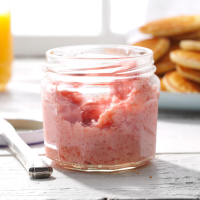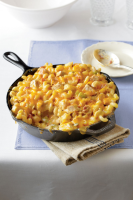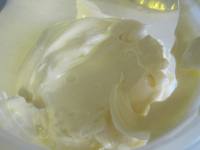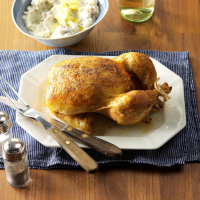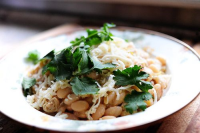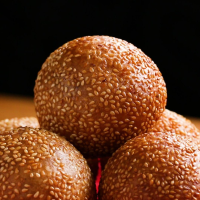HOW TO COOK BEANS - NYT COOKING

Easy, healthy and economical, beans are a home cook's secret weapon. Melissa Clark teaches you all the tricks.
Provided by Melissa Clark
Steps:
- Check for a date on the beans; freshness matters. Dried beans last up to two years, but are best cooked within a year of harvest. Always rinse beans before cooking, and check for stray rocks, twigs and leaves.Leave substantial time for bean soaking (either overnight or using our shortcut method) and cooking. If you are short on time, choose lentils or adzuki beans, which cook quickly and don’t need soaking.To add more flavor, consider cooking your beans in stock or broth instead of water (and see our chapter on seasonings for more ideas).
- There are dozens of varieties of beans, but these are the ones you’re most likely to encounter. Use this list to figure out what to buy when you want them to fall apart into a soup or dal (lentils, flageolet and split peas), or hold their shape for salads (adzuki, black-eyed peas, chickpeas, cranberry and kidney). As a general rule, 1 cup dried beans makes about 3 cups cooked.Above, from left: cranberry beans, lentils, black beans, chickpeas, red kidney beans, split peas, pinto beans and cannellini beans.Adzuki: These small, scarlet beans cook quickly, with a sweet flavor. They’re often used in Japanese bean paste desserts, but are versatile enough for salads, soups and stews.Black: Also known as turtle beans, these full-flavored beans are classic in Latin American cooking, usually for soups and stews.Black-eyed peas: These small earthy-flavored beans, also known as crowder peas and cowpeas, are particularly cherished in Southern cooking.Cannellini: These mild, starchy white beans are often used in soups and stews, particularly in Italian cooking.Chickpeas: These nutty-tasting legumes, also known as garbanzo beans, are used all the globe in many guises: soups, stews, dips and even fried or roasted as a snack. Cranberry: These red-and-brown speckled beans have a rich, toasty flavor. They hold their shape well for salads, soups and stews.Fava: Dried favas, also known as broad beans, have a very strong, meaty flavor and a somewhat thick skin. Beloved in Middle Eastern cuisine, they are made into soups, stews and salads.Flageolet: These are a creamy, smooth, pale green-to-white-hued bean from France with a thin skin. They work well for soups and purées.Great Northern: These large white beans with a firm texture and gentle, nutty flavor are great for stews and soups.Kidney: These large red beans are often used in salads and chili. Some people find them particularly hard to digest, but soaking and rinsing before cooking can help, as does using a pressure cooker.Lentils: There are several varieties of these tiny legumes, ranging from shiny black beluga lentils, which remain nicely intact for salads, to orange-hued “red” lentils, which collapse into a thick purée when simmered. In between, there are brown lentils (good all-purpose lentils) and more expensive French green lentils, also called Puy lentils, which take a bit longer to cook and have a nice sweet flavor. All lentils are relatively quick-cooking and don’t need any presoaking.Lima: Large white dried lima beans take on a velvety, creamy texture after simmering, and hold their shape well. Navy: These small white beans have a nutty flavor, and cook more quickly than other white beans. They are the traditional choice for Boston baked beans. Like red kidney beans, they can be easier to digest if you soak and rinse before cooking.Pinto: These are small brownish-pink beans frequently used in Mexican and other Latin American cooking, particularly for refried beans, stews and chili.Split peas: Green or yellow split peas are small legumes often used in soups, and in the case of the yellow ones, Indian dals. They do not need to be soaked before cooking.
- Soaking your beans helps them cook faster and more evenly, and it can also make them easier to digest. If you add salt to the soaking water (in other words, make a brine), your beans will cook even faster; the salt helps break down their skins. Here are a few methods; choose the one that best fits your schedule. And keep in mind that you never need to soak legumes like lentils or split peas.To soak beans the traditional way, cover them with water by 2 inches, add 2 tablespoons coarse kosher salt (or 1 tablespoon fine salt) per pound of beans, and let them soak for at least 4 hours or up to 12 hours. Drain them and rinse before using. Another option is quick-soaking, which allows you to make a pot of beans within a few hours flat without sacrificing flavor or texture. Put the beans in a pot on the stove, cover with water by two inches, add salt if you like, and bring to a boil. Turn off the heat and let them soak for an hour. Drain, rinse and proceed with your recipe.Here’s a secret you may not know: You don’t actually have to soak your beans at all. Just add them to your pot and plan on cooking your recipe for another hour or two beyond the usual cooking time. Keep an eye on the level of liquid, adding more water, broth or stock if the pot looks dry. There should always be liquid covering your beans as they cook.
- You can simmer beans and other legumes in nothing but plain water with salt and get great results. But before you start cooking, take a minute to add the herbs, spices, stock and aromatics that make beans even better. Even a humble onion and a bay leaf works wonders.There’s a myth out regarding beans and salt — specifically, that you should never salt your beans before cooking because the salt keeps them from cooking through. That’s just not true. You can add salt to your bean pot at the beginning of cooking, and your beans will be better seasoned for it. If you’ve ever cooked beans for hours without them softening, it’s probably because you’re using old beans, or you’ve got hard (mineral-rich) water, or there’s an acidic ingredient in the pot, which can slow down cooking. Using distilled water solves the hard water problem. (And soaking your beans in salt water before cooking not only adds flavor, it can also help them cook more quickly.)Don’t stop at salt and black pepper. Spices like cumin, cinnamon, coriander, ground chiles and allspice add depth and complexity to your bean pot and are traditional additions in many cultures. To give spices a richer character, toast them in the pot for a few minutes until you can smell them, then add beans and liquid.Fresh or dried branchy herbs — rosemary, thyme, bay leaves, oregano, sage — work best with beans when they are added at the beginning of cooking. Tie them up with some kitchen string if they are still on their branches, or just throw them into the pot if you don’t mind retrieving them later. For a good, all-around basic bouquet garni, tie 1 bay leaf (preferably fresh) together with a sprig or 2 of rosemary, a couple of thyme sprigs and some parsley and/or sage. Loose dried herbs can be tossed directly into the cooking liquid. Soft herbs — cilantro, basil, parsley, chives — can be scattered on top of cooked beans as a garnish, or added during the last 15 or so minutes of simmering.A few aromatics added to your bean pot at the beginning of cooking turns the pot liquor into a rich, heady broth. Add garlic, celery, carrots, chiles, ginger, onions, leeks – anything that you’d add to a stock will work well with beans. Tie aromatics up in cheesecloth for easy removal, or just throw them into the pot and fish them out later.Consider cooking your beans in stock instead of water. Vegetable, chicken or beef stock will add a rich depth of flavor; consider chicken stock for cannellini beans, or vegetable stock for lentils. If you use stock, you may want to adjust the amount of salt you add to your beans. If you decide to add meat to your pot, put it in at the beginning of cooking. Bacon and ham (or a ham bone) will add wonderful smokiness that pairs deliciously with pinto, cranberry or white beans. After the beans have finished cooking, remove the meat, chop it up and add it back to the pot.
- You’ve soaked your beans (or maybe not) and they’re ready for some heat. Simmering them on the stove is the time-honored method, and we’ll tell you how to do it. But you can also cook them in a slow cooker or a pressure cooker — whatever you prefer.Place your beans in your pot and cover them with at least 2 inches of water, and turn the heat to low. Stir them gently and occasionally, never letting them hit a strong boil; this can burst their skins and make them mushy or unevenly cooked. Depending upon the variety, dried beans will cook quickly (about 15 minutes for red lentils) or slowly (up to 3 to 4 hours for unsoaked chickpeas or lima beans). To use a slow cooker, cover your beans with 2 inches of water or broth and salt to taste, and toss any aromatics you like into the pot. Set your machine to the low setting and cook until the beans are done, usually 3 to 6 hours. If you are cooking kidney beans, you need to boil them on the stove for 10 minutes first before adding them to the slow cooker. This makes them much more digestible.To cook beans in a pressure cooker, place your soaked or unsoaked beans with enough water to cover by 2 inches into the pressure cooker. Add salt, any aromatics you like, and a tablespoon of neutral oil to help keep the foam from clogging the vent. Make sure not to exceed the maximum fill line for your brand of pressure cooker. This is usually around the halfway mark for beans. Cook at high pressure for anywhere from 5 to 10 minutes for small beans such as black-eyed peas, lentils and split peas, to up to 35 to 40 minutes for larger beans such as chickpeas. Soaked beans will cook more quickly than unsoaked beans.
- How do you know when your beans are ready to eat? Read on for the signs that it’s time to taste — and don’t toss that cooking liquid.To make sure your beans are cooked thoroughly, scoop up a couple of beans and blow on them. The skin should curl and wrinkle. Then taste. They are done when they’re tender and cooked through to the center (but not mushy). Let them cool in their cooking liquid.A tip: Don’t throw out your bean cooking liquid, that tasty pot liquor. Salt it if need be, and save it. It’s basically a rich vegetarian stock that freezes well for up to six months; use it as you would any other chicken or vegetable stock.
- Here is a simple, flavorful way to cook pinto beans from David Tanis, though black beans, navy beans or any other small red beans would work well. These are good with just about anything, or add sour cream, cornbread and cheese after cooking for an easy meal in a bowl. The bacon is, of course, optional. For the best-tasting beans, cook at a bare simmer.
- How and where you store your beans, lentils and more, both before and after cooking, can dramatically affect flavor and texture.Store uncooked dried beans in a dark, cool cabinet for up to a year. They really go downhill after two years, so throw out all your old beans, especially if you can’t remember when you bought them. If you can find a harvest date on your package of beans, all the better. Some beans may have been stored in a warehouse for months or even a year before they arrive at your market. Cooked beans are best stored in their cooking liquid in the refrigerator for up to 5 days. Or drain the beans and toss them with a little oil, salt and pepper (or a vinaigrette) before chilling. This both preserves them and flavors them. Beans can turn mushy in the freezer, but if you do want to try to freeze them, do so in their cooking liquid.
PINTO BEANS RECIPE - FOOD.COM

My family loves this recipe after trying many different ones. When I'm short on time I use canned beans and just add the rest of the ingredients, I cook the bacon up when using canned beans. ENJOY!
Total Time 3 hours 10 minutes
Prep Time 10 minutes
Cook Time 3 hours
Yield 8 serving(s)
Number Of Ingredients 8
Steps:
- Clean beans and wash well with water.
- Put beans in large pot, add water.
- Bring beans to boil and let boil for 1 hour.
- Check closely, as beans cook, you will probably need to add more water.
- Run tap water until very hot before adding to beans.
- Add bacon pieces and cook another 45 minutes.
- Add spices and reduce heat to low and cook another 20 to 25 minutes.
Nutrition Facts : Calories 217.4, FatContent 2.5, SaturatedFatContent 0.7, CholesterolContent 2.7, SodiumContent 47.5, CarbohydrateContent 36, FiberContent 8.9, SugarContent 1.2, ProteinContent 12.7
HOW TO COOK PINTO BEANS | 3 WAYS: SOUTHERN, MEXICAN, COW…
Jan 09, 2022 · Cooking dried pinto beans follows the same process used for dried beans of almost any variety. How to Cook Pinto Beans. All 3 recipes below follow the same basic instructions: Add your ingredients to a pot with water/broth to cover. Bring to a boil for 5 minutes, add more water as needed, cook on low until beans …
From smartslowcooker.com
From smartslowcooker.com
See details
HOW TO COOK BEANS (AND ALL THE MYTHS YOU SHOULD IGNORE) - EPI…
Mar 25, 2020 · Place 1 lb. dried pinto beans in a large, heavy pot. Add water until it's about 2 inches above the top of beans. Add water until it's about 2 inches above the top of beans. Cover pot, …
From epicurious.com
From epicurious.com
See details
COOKING TIMES FOR DRIED BEANS - THE SPRUCE EATS
Sep 19, 2019 · But, while canned beans are easy to cook—you just throw them in a pot and heat until they're warmed—it can be a challenge to know how long to cook dried beans. The U.S. Dried …
From thespruceeats.com
From thespruceeats.com
See details
CATEGORIES - LIFESTYLE - ALL 4
Aussie singles get hitched to spouses who they see for the first time on their wedding day
From channel4.com
From channel4.com
See details
CHOWHOUND
Thank you for making Chowhound a vibrant and passionate community of food trailblazers for 25 years. We wish you all the best on your …
From chowhound.com
From chowhound.com
See details
SIGN-IN | LIVESTRONG.COM
LIVESTRONG offers trusted health information and health news on diseases, symptoms, drugs, treatments and more. Get healthy with LIVESTRONG's articles and videos on diet, nutrition, fitness, weight loss and other health concerns. LIVESTRONG's active community can help you stay healthy and live a balanced daily lifestyle. Visit LIVESTRONG …
From livestrong.com
From livestrong.com
See details
HOMEMADE PORK BREAKFAST SAUSAGE RECIPE - THE SPRUCE E…
Jul 29, 2021 · In general, homemade is better than store-bought, and this spiced pork sausage is no exception. Taking a mere 15 minutes, and calling for just ground pork and pantry spices, this …
From thespruceeats.com
From thespruceeats.com
See details
CHOWHOUND
Thank you for making Chowhound a vibrant and passionate community of food trailblazers for 25 years. We wish you all the best on your …
From chowhound.com
From chowhound.com
See details
SIGN-IN | LIVESTRONG.COM
LIVESTRONG offers trusted health information and health news on diseases, symptoms, drugs, treatments and more. Get healthy with LIVESTRONG's articles and videos on diet, nutrition, fitness, weight loss and other health concerns. LIVESTRONG's active community can help you stay healthy and live a balanced daily lifestyle. Visit LIVESTRONG …
From livestrong.com
From livestrong.com
See details
HOMEMADE PORK BREAKFAST SAUSAGE RECIPE - THE SPRUCE E…
Jul 29, 2021 · Remember to cook ground pork to a minimum of 160 F, using a food thermometer to check the temperature. To always have homemade breakfast sausage on hand, multiply the recipe, cook …
From thespruceeats.com
From thespruceeats.com
See details
HOW TO COOK DRY BEANS FROM SCRATCH | UNL FOOD
If you've avoided cooking dry beans from scratch because "it takes too long," consider the actual "hands-on" time can be just minutes! All it takes is a little planning ahead for a time to soak the beans and a time to cook them. One pound (2 cups) of dry edible beans yields about 6 cups of cooked beans. If your recipe calls for one 15-ounce can of beans, use 1.75 cups of cooked beans…
From food.unl.edu
From food.unl.edu
See details
PINTO BEANS NUTRITION FACTS, HEALTH BENEFITS AND RECIPES - …
Dec 01, 2016 · Pinto beans are often used in a spicy stew called chili con carne, though kidney beans, black beans and many and others are used in this delicious stew as well. Health Benefits 1. May Slow Tumor Growth. Pinto beans …
From draxe.com
From draxe.com
See details
HOW TO COOK BEANS (AND ALL THE MYTHS YOU SHOULD IGNORE) - EPI…
Mar 25, 2020 · Place 1 lb. dried pinto beans in a large, heavy pot. Add water until it's about 2 inches above the top of beans. Add water until it's about 2 inches above the top of beans. Cover pot, …
From epicurious.com
From epicurious.com
See details
THE BEST WAYS TO USE PINTO BEANS - TASTE OF HOME
Feb 13, 2019 · Tasty toppings jazz up this no-fuss soup that has Mexican flair. The recipe for this sure-to-please soup was given to me by a friend. I make it often for company, and everyone asks for the recipe. You can substitute pinto beans in red chili sauce for the regular pinto beans …
From tasteofhome.com
From tasteofhome.com
See details
HOW TO COOK BLACK BEANS LIKE A PRO - THE SPRUCE EATS
Aug 13, 2021 · Overnight method: Place the beans in a large enough container to allow for expansion and cover with two inches of water.Let the beans sit overnight. Before cooking the next day, drain the beans, transfer to a pot, and cover with fresh water. Quick-soak method: Place the beans …
From thespruceeats.com
From thespruceeats.com
See details
HOW TO SEASON PINTO BEANS: 13 STEPS (WITH PICTURES) - WIKIHOW
Apr 28, 2021 · Rinse dried pinto beans with cool tap water. Pour your beans into a colander, and jiggle the colander under running water for one minute to wash residual dirt off your beans. You can sift through the beans with your fingers to help clean them. Soaking canned beans will make them mushy. Only soak dried beans.
From wikihow.com
From wikihow.com
See details
PINTO BEAN RECIPES | ALLRECIPES
From vegetarian burritos to meaty chili, Pinto beans are an easy and inexpensive way to make a filling dinner. Browse over 250 Pinto bean recipes to enjoy.
From allrecipes.com
From allrecipes.com
See details
REFRIED BEANS RECIPE - SIMPLY RECIPES
May 01, 2022 · This recipe gives instructions for making refried beans from scratch, starting with dried beans. You can also easily use canned beans, in this case use three 15-ounce cans of whole pinto beans, and skip to Step 3, rinsing and draining the beans …
From simplyrecipes.com
From simplyrecipes.com
See details
RECIPES | JENNY CAN COOK
Using dried beans results in the meatiest tasting beans. This simple recipe takes no work at all. ... pinto beans, and cheese, this easy casserole will quickly become a family favorite. And it’s gluten-free. (4O MINUTES) One Pot Spag, Meat Sauce, Spinach. ... it often takes longer to take the pictures than to cook the recipes…
From jennycancook.com
From jennycancook.com
See details
COOKING DRIED BEANS WITH AN ELECTRIC PRESSURE COOKER
Nov 12, 2020 · Place beans in pressure cooker; cover beans with about 4 cups of fresh water. Make sure there is about 2 inches of water above the beans. Seal pressure cooker and cook according to the manufacturer’s instructions. Adjust cooking times as needed depending on the variety. Cooking longer will result in softer beans. Beans …
From wilkes.ces.ncsu.edu
From wilkes.ces.ncsu.edu
See details














